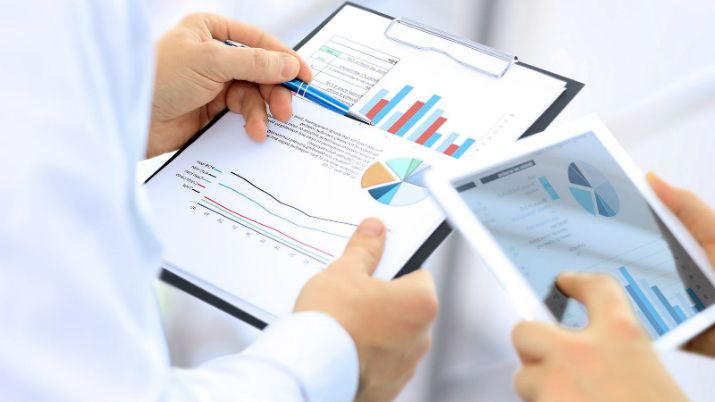Although data is crucial, organizations cannot truly use any of it unless they have the appropriate analytics tools. Business analytics tools help companies make sense of the data they collect and find new ways to improve their products and services.
This article was written to help you find the best tools for business analytics for your business. Use our Product Selection Tool by clicking on the banner at the top of the page to skip the tutorial. You’ll receive a list of suggestions for business analytics software for your business after responding to a few questions. Analytics has to be at the top of the most-used list when it comes to business buzzwords.
The importance of analytics and data mining has never been greater because of the internet and all the ways that technology is evolving. Data is fantastic, but how it is used is what can make or destroy a business. Business analytics can help with it.
What are Business Analytics?
An organization’s data and performance are examined in order to obtain insights and make future data-driven choices using statistical analysis. This process is known as business analytics, or BA. The objective of BA is to focus on data sets that can boost profits, productivity, and efficiency. When applied properly, BA may be used to accurately forecast future events linked to customer behavior and market trends and help create more productive procedures that might enhance income.

Business Analytics Fundamentals
There are various applications for business analytics, but in commercial enterprises, BA is often used to:
- Examine data from many sources.
- This might be anything from cloud apps to CRM software and marketing automation tools.
- To detect trends in datasets, use sophisticated analytics and statistics.
- These patterns can aid in trend forecasting and provide fresh perspectives on customer behaviour.
- Keep track of trends and KPIs as they change in real-time.
- Businesses can easily access all of their data in one place and use it to come to quick, accurate conclusions.
- Encourage choices that are based on the most recent facts.
With BA, you can be confident that you have all the information you need for not just one, but many distinct scenarios. BA offers a wide quantity of data that you can use to support your decisions.
There are four main methods for business analysis, but these are the most common ones. They are put into practise piecemeal, beginning with the simplest. It all depends on your final aim while employing BA; no strategy is more crucial than another.
Utilizing these four different forms of analytics enables you to clean, segment, and digest your data in a way that enables you to develop answers to any problems your business may encounter.
Descriptive analytics: it is possible to spot trends and patterns in historical data and KPIs. Using data aggregation and data mining techniques, this enables a comprehensive view of both the past and the present. Many businesses employ descriptive analytics to take a closer look at consumer behavior and determine how best to focus marketing campaigns on those customers.
Diagnostic analytics: concentration on historical performance to identify the factors behind certain patterns. To determine the reason behind certain occurrences, drill-down, data mining, data discovery, and correlation are used. Algorithms for categorization and regression are utilized once the likelihood of the occurrence and its potential causes have been determined.
Predictive analytics: makes use of statistical models and machine learning methods to estimate and evaluate results in the future. Models that estimate the probability of particular outcomes are frequently created using the findings of descriptive analytics. This type is frequently used by sales and marketing teams to predict consumer attitudes based on social media data about particular customers.
Prescriptive analytics: means analytics that create data based on prior performance. This kind of business analytics can suggest the precise activities that should be taken in order to get the greatest outcome, in addition to determining results. Complex neural networks and deep learning are frequently used to do this. This kind of business analytics is frequently used to match different solutions to a customer’s current demands. The current business conditions will determine which approach to use.
Components of Business Analytics

Now that we have a better understanding of how it functions, let’s dissect all the elements that make up business analytics and the techniques it employs to arrive at its insightful findings. The approach you choose while delving further into BA will rely on the end-goal you decide upon before beginning the process. Whatever approach you go with, there will be valuable information waiting for you in the end.
Data Analysis
Utilizing machine learning, statistics, and database systems, data mining is the process of sifting through enormous datasets to find patterns, trends, and other realities about the data that aren’t immediately obvious. Regression, clustering, and outlier identification are just a few data mining methods that business analytics might use. This helps people make decisions faster and better, which makes it a valuable part of business analytics.
A business could be able to observe which clients are purchasing particular items at particular periods of the year, for instance, using data mining. Then, you may segment those clients using this data.
Text Mining
Text mining is the practise of obtaining valuable information from text found in applications and on the Internet. Textual data is gathered by businesses via text mining from contact centre scripts, blog comments, and social media sites. Then, this information is used to make new products, improve the customer experience, and figure out how well their competitors are doing.
Aggregation of data
The act of gathering and collecting data, which is subsequently presented in a condensed form, is known as data aggregation. Basically, it has to be gathered, consolidated, cleaned, and filtered to remove any errors or duplicates before the data can be evaluated. This is a key phase in business analytics since the quality of the results you’ll get at the end of the process depends directly on how accurately you can derive insights from data. The way a marketing team leverages data like consumer demographics and analytics (age, geography, number of transactions, etc.) to customise their messaging and offers is an example of data aggregation.
Forecasting
Businesses are given a forecast of future occurrences or behaviour when business analytics is utilised to examine operations that happened during a certain time or season thanks to historical data. Forecasting is useful for many things, like figuring out why sales go up around certain holidays or why people search for certain things on the internet more around certain events, like award shows or the Super Bowl.
Jackie Jeffers, Analytics Strategist at Portent, emphasises how forecasting should play a significant role in your overall strategy. Setting annual objectives and forecasting online user behaviour, like traffic and conversions, using past data is beneficial. You can track first-touch interactions with a potential lead all the way through the conversion stage with customer journey analytics. It is possible to optimise the intermediate processes and enhance the user journey when you have visibility into every touchpoint in the nurturing process. “
Visualization of data
Data visualisation is a fundamental component of business analytics and is a must-have for all you visual learners out there. Your data’s information and insights are effortlessly extracted and presented in an interactive graph or chart. The ability to track business measurements and KPIs in real-time to better understand performance and goals depends on the choice of data visualisation tools. Take a look at the hundreds of independent evaluations provided to you by G2 if you’re unsure which software choice is best for your business.
What makes business analytics so important?
Business analytics is a complex process with many moving components, but it’s not always evident why BA is crucial for your company. Business analytics is the first tool your firm needs in order to make informed decisions. These choices will probably have an effect on your entire business since they will help you expand market share, boost profitability, and give potential investors a higher return.
There is no doubt that technology has an influence on a large number of organisations, but when applied properly, BA has the potential to improve your business while giving a number of other enterprises a competitive edge. Business analytics aims to integrate this data with useful insights to help you as a company make better decisions, even if some businesses are unclear about what to do with vast volumes of data.
The decision-makers at your firm will also feel informed in a way that suits them and the objectives you established at the outset of the process, because this data may be provided in any style.

